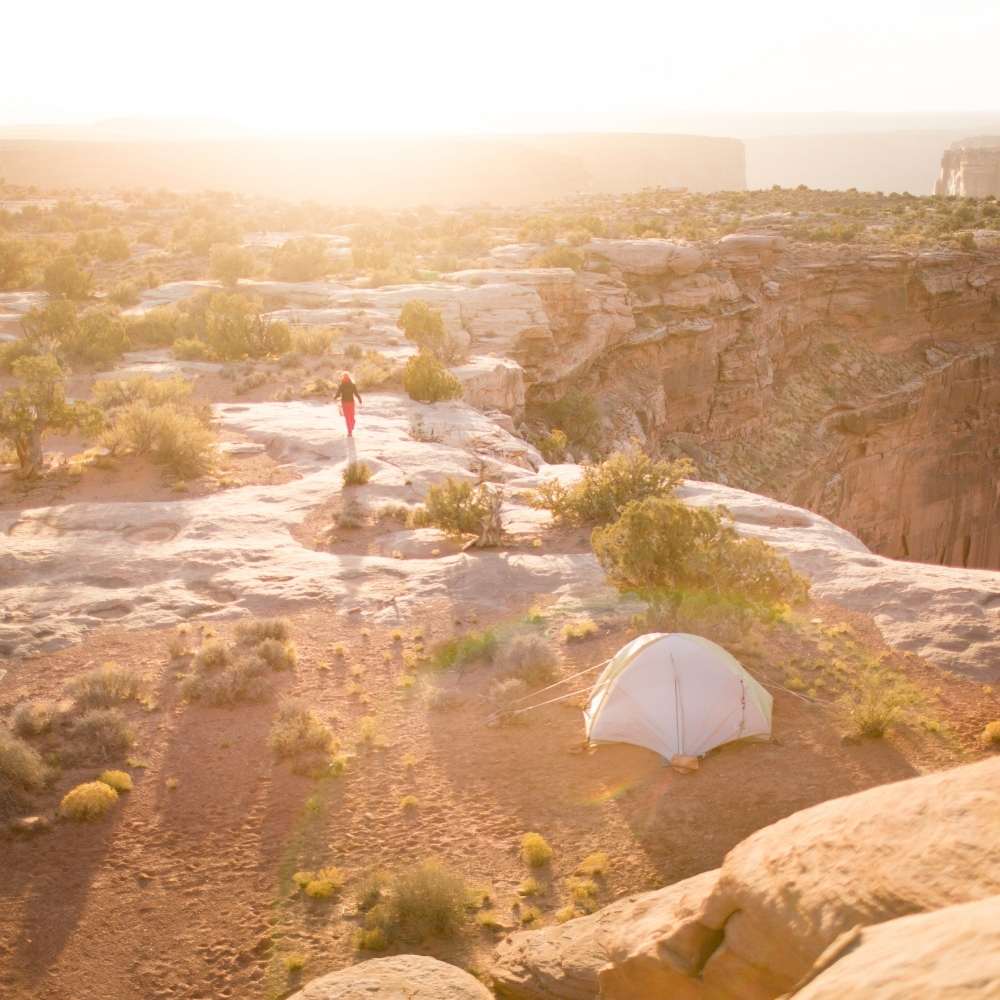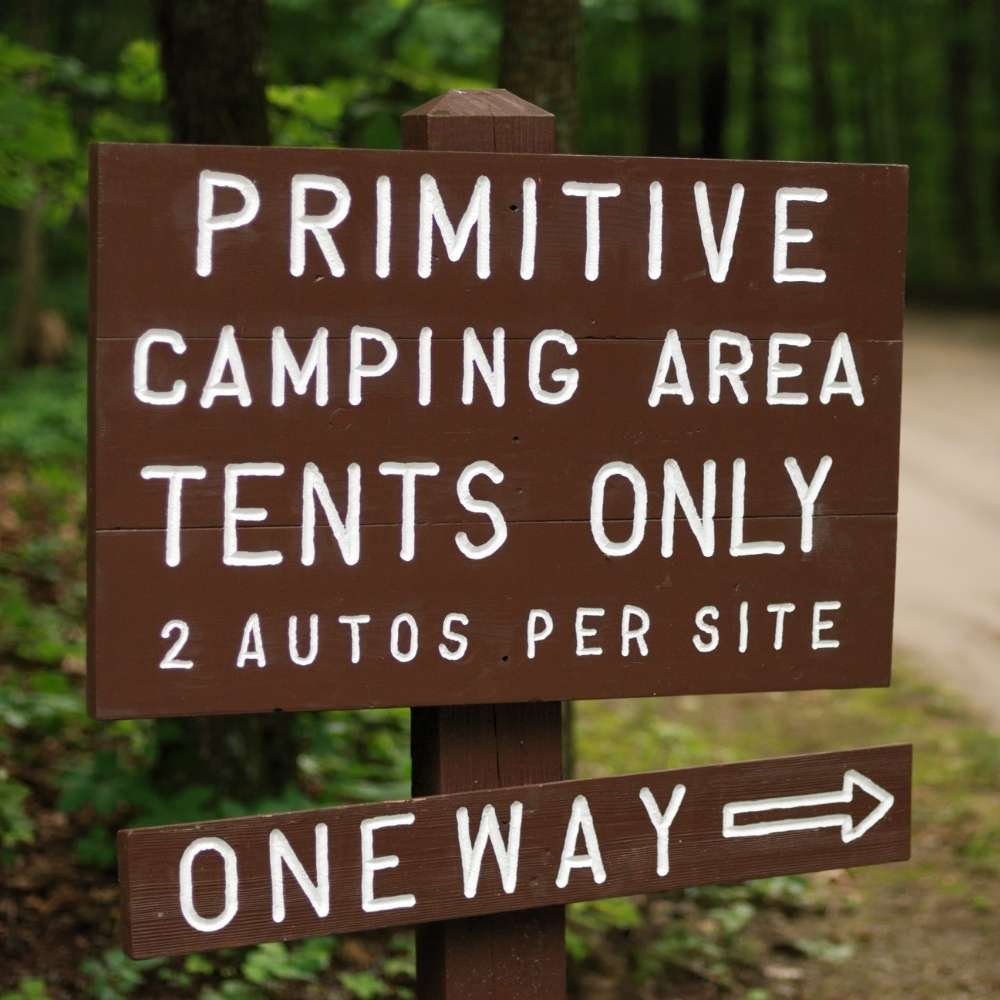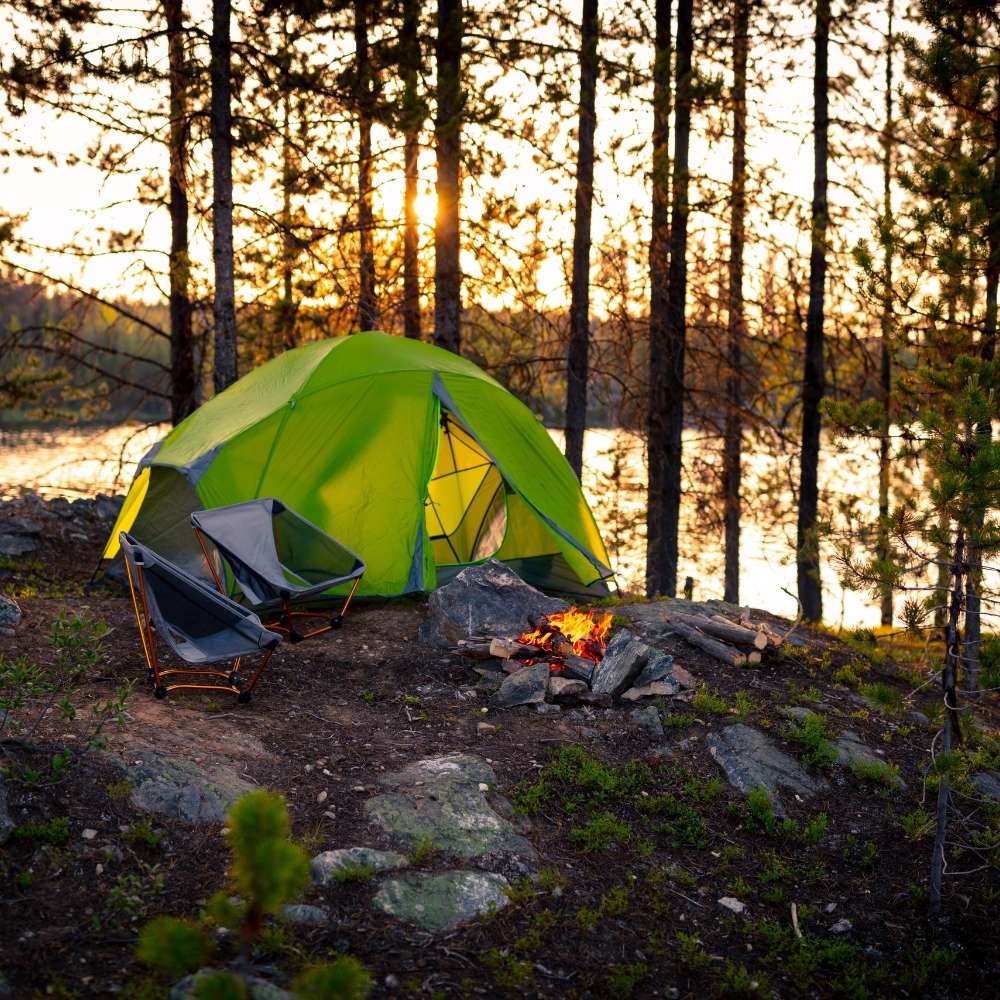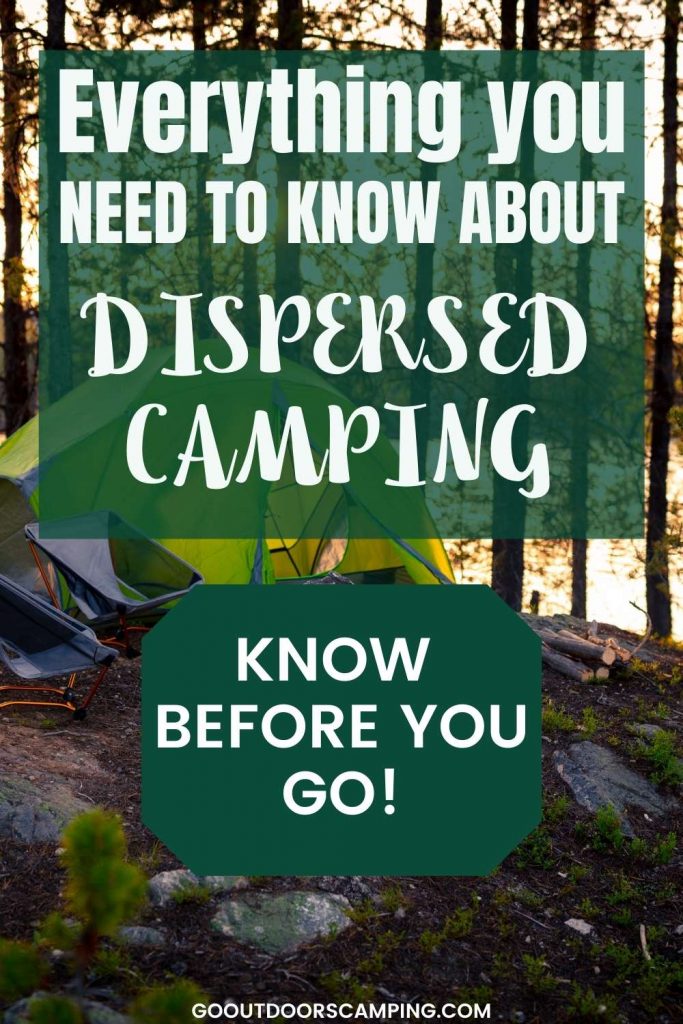What is dispersed camping? Learn more about dispersed or primitive camping and what those camping terms mean.

Dispersed, Primitive, and Backcountry Camping
Camping on public land that is not within a campground or campsite is commonly known as dispersed, primitive, or backcountry camping.
This is opposed to camping within an established campsite or campground. The Federal Bureau of Land Management (BLM) owns a lot of land throughout the United States. This land, for the most part, is categorized as public land and can be camped on.
Whatever you may call it, dispersed camping is the true version of “roughing it”. You’re out in the wilderness, usually without other people close by. Some of the best camping trips we have had are those were we have camped primitively. It’s a very rewarding experience if you love to be in the outdoors.

Benefits of Dispersed Camping
We think the benefits of dispersed camping are plentiful:
- You don’t have to stay within a designated campsite.
- You are able to avoid other campers and don’t have to camp next to strangers.
- There are less strict rules regarding pets
- (Usually only when you are in a refuge spot or within National parks)
- There are generally no rules against the number of campers in your camp spot.
- It’s budget friendly.
- Camping in dispersed areas tends to be quieter.
- You don’t have to make reservations ahead of time and can move based on things like where you end up while hiking trips or moving to where the fishing is good.
- There tend to be less traveled, more wild areas.

Is Dispersed Camping Free?
Dispersed camping on undeveloped, meaning there are no amenities or services, BLM land is free.
If you are instead using a day use or campsite, there will usually be a small fee that you need to pay.
Using a free dispersed camping spot isn’t always cheaper than paying a small fee for a campsite though. If the campsites provide certain amenities, like water or restrooms, they may save you from buying and bringing extra supplies.
How Long Can You Camp in a Dispersed Area?
According to the BLM, you can camp in an area up to 14 days within a 28 day period. After 14 days, you have to move at least 25 miles away from the area you were in until the 28th day has passed. Then you can go back and camp for another 14 days.
So, as long as you move after two weeks, you can keep dispersed camping for as long as you’d like. This is a cheap way to get away on a long vacation as long as you have the right gear and preparedness.

Are There Services or Amenities When Primitive Camping?
There are no services or amenities in primitive, or dispersed, camping areas. This means that you will need to plan ahead and bring everything you need.
Normal camping areas have amenities such as restrooms, water, picnic tables, and other items.
Dispersed camping areas are usually not kept and do not have any services. It’s just you and the gear you bring out there.
How to Find Dispersed Camping Spots
You can use the BLM land map tool found here to find public land areas. You can then scope out spots to set up camp. If the area is unused and not marked as a no-camping area, then you should be able to camp there. If you have questions about where you can go and specific locations, you can call your state’s BLM office.

If you have friends and family in the area, they can be a good resource to find out which areas they have been camping before as well.
Facebook and Reddit usually have local-specific groups for camping that you can ask questions in. People won’t always want to give up their favorite spots for fear of others overusing them. However, campers are usually friendly and will at least provide general areas that are good for dispersed camping.
One of our favorite ways to find new spots is to look up public land areas and hunt out areas on our own. We tend to find spots out of the way that a lot of people haven’t been to.
We enjoyed dispersed camping at Zion National Park.

How to Prepare for Primitive Camping
In order to prepare for primitive camping, you need to take a few simple steps.
- Determine the area you will be camping in and for how long.
- Research any restrictions or regulations for the area. Call ahead of time if you have questions.
- Pack all of the things you need to fill at least your basic necessities.
- We recommend putting together a campfire cooking kit and creating a meal plan ahead of time. We like this one.
- Know what you will do in case of an emergency. Since a lot of dispersed camping is out of cell range and there usually aren’t many other people around, you need to have a plan.
- Let someone know where you are going before you head out, especially if there is no cell service.
What to Look for in a Good Dispersed Camping Spot
There are a few things we like to look for in a good primitive camping spot.
- Enough flat land to place your tent and equipment.
- Proximity to firewood and other resources (like water if next to a body of water).
- Proximity to recreational activities like trails, good fishing spots, and swimming.
- No other campers around or at least far enough away for you to have privacy.
- No clear signs of danger like cliffs, fresh predator tracks, etc.
- Far enough away from standing water to avoid a large number of insects like mosquitoes.

Going Dispersed Camping
Dispersed camping is our favorite way to camp. However, you do need to make sure that you go prepared. Cell service and other people to help are things you can’t count on when you choose the primitive route. It’s a good idea to know the area you are going to and what to expect. We hope you enjoy your trip!

Leave a Reply